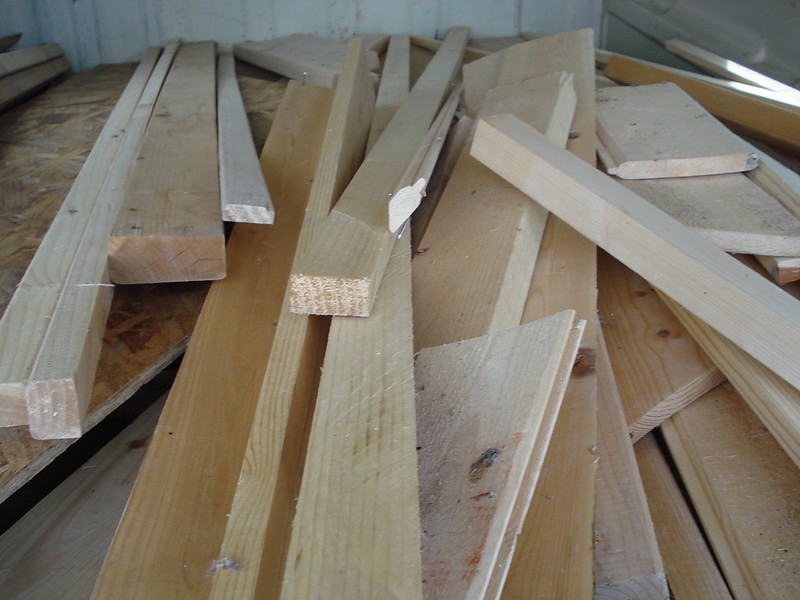You may find wooden furniture pieces fancy and interesting. The beauty of wood is classic and timeless. However, one problem that is common among wooden furniture pieces is that it has the tendency to get warped through time. This usually happens when the wood is exposed to moisture and heat through time. One of the best ways to solve this problem is to unwarp wood. The method presented in this article on how to unwarp wood is applicable for cases that are considered minor. For severe cases, there may be a need to take more advanced steps.
What You Need
- Flat surface/ironing board
- Iron (or, steam iron)
- Large towels
- Paper towels
Step-by-Step Instructions
Step 1: Use Heat
One of the most popular methods used in unwarping wood is applying heat. There are various types of deformation of food, including cup, twisted, bow, and others. Even though it may not always be possible to effectively unwarp wood back to its original state, you can fix the problem by using heat.
- Clamp the entire board on a surface that is flat, such as a floor.
- Apply heat on the board. Make sure to put enough pressure on the areas affected. Keep on applying heat until it becomes very hot.
- Bend the warped board slowly and wait until it cools down. As you do this, the deformed wood can be restored to its original state.
While you need to apply heat on the wood, it is important not to overheat it because it may only damage the wood.
Step 2: The Iron Technique
If the first technique on how to unwarp wood does not work, you may want to try the iron technique. Here are the steps to do so:
- Warp the board using towels that are moistened. For this, you can use two huge rags or towels, moistening them. Nicely wrap the board with it, making sure that the area that is affected is well covered.
- It is preferable to use towels that are large enough to cover the board entirely. It would also be best to use towels that are able to handle iron heat.
- As you moisten the towels or rags, make sure to remove excess water.
- Put the board that is covered with a towel on an ironing board. If you do not have an ironing board, you can place it on any flat surface. With this in mind, the concave surface should be face down, and that the surface that you will be using is sturdy enough to handle even high heat.
- Set the heat of the iron to the highest temperature of heat. In general, steam iron offers more effective results.
- When the iron is already hot, you can start pressing it on the surface that has warped, sliding it over the surface entirely. Make sure to apply pressure that is even all over the entire board.
In order to achieve the best results, press the iron for about 5 to 10 seconds, transferring it to the next area. To ensure an even distribution of heat, make sure that the entire board is covered, and not just the areas that are warped.
This process needs to be repeated as many times as required. Once the problem is solved, you can stop. After the wood is unwarped, you can then remove the cover, allowing the board to thoroughly dry.
Note that this method in unwarping wood may not be effective on all types of warped wood. If you notice that there is no progress even after doing the steps several times, you may want to try other methods.
Step 3: Use Pressure
This method in unwarping wood is often more effective than other methods mentioned in this list.
- Prepare damp paper towels, putting them on top of the wood’s concave side. A steaming towel may also be used.
- The material to be used needs to be moist, covering the entirety of the wood. Before starting, it is best to get rid of the excess water out of the paper towels.
- As you apply moisture on the concave surface, the convex side will be dried out.
- You can also wrap several layers of plastic on top of the towel, making sure that they are wrapped tightly around the wood. This process will help in slowing down evaporation, keeping the wood moist for an extended period.
- Place the wood in a clamp, tightening it in order to unwarp the area that is affected. Be careful in doing this step, because applying too much pressure may also result in wood that is damaged.
Conclusion
The warping of wood is a natural process, which is why preventing it is quite challenging. During those times when the warping of wood can no longer be prevented, fixing may be the only solution. The steps mentioned above are found to be very effective. If a method on how to unwarp wood does not work for you, you can simply try the others. Now that you are familiar with the steps, you can now start restoring the beauty of your wooden furniture. If this article has helped you, feel free to leave your comments below, and share this article.
